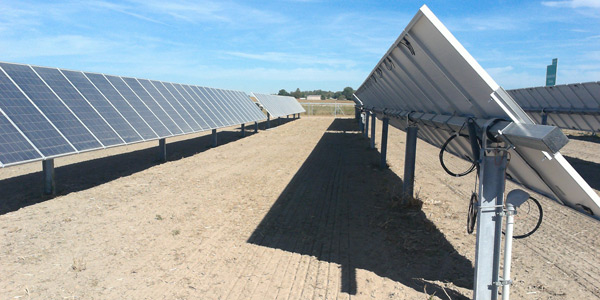By Amanda Durish Cook
MISO is stepping up efforts to understand how its markets will function with the possible participation of heavy concentrations of distributed energy resources.
The RTO is researching how to manage DER aggregators in its market, DER Program Director Kristin Swenson said during a joint workshop between MISO and the Organization of MISO States (OMS) on Tuesday.
The workshop was held over telephone — rather than in person — because of the COVID-19 pandemic.
“I’m leading a virtual MISO stakeholder workshop upstairs while my wife leads a virtual yoga class downstairs. A lot of ‘virtuality’ these days,” MISO Managing Assistant General Counsel Michael Kessler remarked as he began his presentation.
Swenson said the MISO market platform’s computational abilities cannot handle the addition of several thousand small, distributed resources. She also noted that broad DER aggregation across multiple nodes is difficult to manage from an operations standpoint. The RTO may be unable to handle some issues if it doesn’t precisely know the physical location of some aggregated resources, she said.
“You may not be able to solve the transmission or reliability issues without visibility from an aggregator,” Swensen explained. “That’s what we call the DER balance problem.”
MISO last held a DER workshop in February, in which it focused on transmission planning challenges as the distribution system takes on more generating resources. (See MISO Mapping Out DER Challenges, Benefits.)
Energy storage may assist in the balancing act. FERC Order 841 mandated RTOs facilitate participation for storage resources over 100 kW located on distribution systems. In response, MISO created a contract in its Tariff to coordinate with distribution utilities that host storage resources.
But a legal challenge to Order 841 is currently pending before the D.C. Circuit Court of Appeals. Opponents of the order, which include the National Association of Regulatory Utility Commissioners and traditional utilities, are suing to block FERC’s ability to mandate DER participation in wholesale markets and seeking an opt-out mechanism for states.
“We’re still waiting to see what the states’ authority will be and what FERC’s jurisdiction will be over storage resources located on the distribution system participating in wholesale markets,” Kessler said.
In addition, FERC’s 2016 Notice of Proposed Rulemaking on the participation of DER aggregation in wholesale markets is still outstanding.
Working Through the Tension
Swenson said MISO’s work with OMS on DERs began in preparation for a federal rulemaking on DER participation.
OMS Executive Director Marcus Hawkins said the increasingly blurred lines between state and federal jurisdiction “has created tension.” He said a DER participation model must respect the “primarily vertically integrated nature of the MISO footprint.”
“Whatever the eventual market model is, it should reflect that fact,” Hawkins said.
Hawkins said a significant number of aggregators selling at the wholesale level could disrupt state-jurisdictional resource adequacy planning.
“There’s just a lot of coordination required when a DER wants to participate in the wholesale market,” Hawkins said, adding that OMS wants to avoid double-counting when a resource on the distribution system participates at both the wholesale and retail levels. However, he said MISO, utilities and states should not all rush to invest in technology that’s ultimately “redundant” in order to gain visibility into DER operations.
“We’ve been fighting against wasteful technology to do that,” Hawkins said.
Swenson said MISO will survey members in mid-April on how they currently communicate with DERs, what investments they have made to improve communications and what approaches they would recommended.
“We’re trying to get a good impression of where folks are in communicating with DERs as MISO prepares to communicate with more resources. Where should MISO be focusing?” Swenson said.
Swenson stressed that the new survey is separate from the annual OMS survey on DER totals in MISO.
Independent Market Monitor staffer Michael Chiasson said the monitoring of DERs isn’t a concern for now. DERs and demand response “typically lack the size and concentration needed to have significant market power,” he said.
However, Chiasson noted, DERs could help lessen the market power wielded by large, traditional generators in load pockets constrained by transmission limitations.
“It’s a good structural thing to have more market participants,” Chiasson said.
Chiasson said if the Monitor eventually discovers that DERs could exercise market power, it could propose to FERC under Federal Power Act Section 205 to adjust the application of market mitigation.
“A lot of market rules evolved that way,” Chiasson said.




